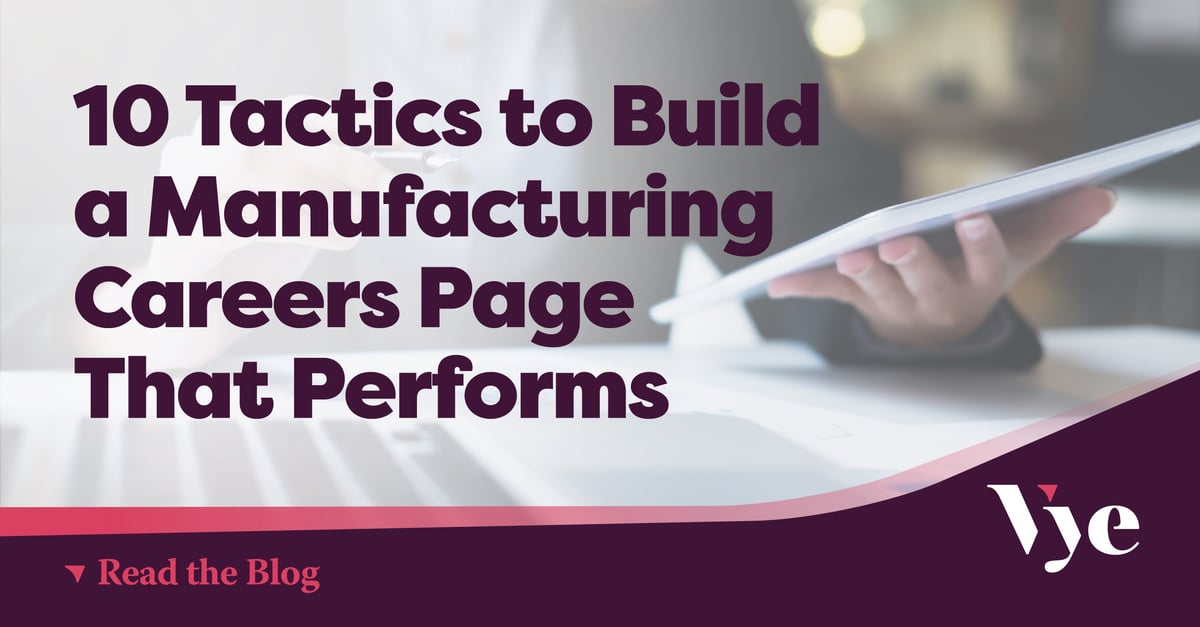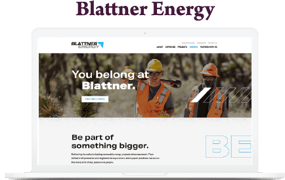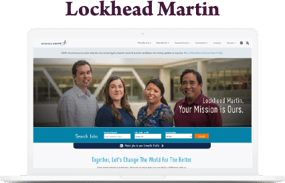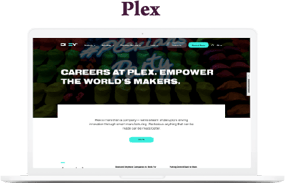
Build a Careers Page that Works
Manufacturers across the nation have faced challenges in a post-Covid world to find qualified candidates to meet production demand. While those challenges go deep (more on that here), there are a number of low-hanging fruit tactics that a hiring team can implement to improve their recruitment results.Once you understand the candidates you’re trying to reach (more on that here), you can build a Careers page that is designed to attract the right people. One of the most impactful things a company can do to increase visibility and engagement is to improve their Careers page. Here are the top things to address on your Careers page:

1. Prioritize Careers in the navigation
If hiring is a top objective, consider moving Careers to the main navigation on your website. Some companies will even list Careers as the first navigation item. In addition to this, always place a Careers link in the footer. This is a common place for people to navigate when seeking career opportunities.

2. Optimize your manufacturing Careers page
SEO plays an important role in the likelihood of your company page appearing in search queries. Be sure your meta title and meta description are filled with relevant keywords. Include the top roles you often hire for in the meta title and description.
Meta title: Should be 50 characters or less and include keywords. This is what appears in Google, and should be descriptive of what they will find on the page. It should be unique for every page and should compel a user to visit the page.
Meta description: Should be between 50-160 characters long and include keywords. The entire purpose of this is to get a user to click, so make sure it reflects the page and present compelling information. This should be unique for each page.
Be sure to include keywords throughout the page, woven organically into the content. Keywords change depending on the specific vertical, but here are the top keywords you should consider.

3. Include your company’s mission statement and core values
Candidates should be able to get a feel for your company through the Careers page. Sharing your mission, vision, and values can help set expectations.

4. Address questions about pay structure and benefits openly and honestly
Prospects want to know about pay structure. We know this can be a sensitive topic. But how can you find ways to set expectations while leaving flexibility for an individual’s unique approach? Can you showcase a typical commission structure? Can you talk about base pay? Can you speak in averages? Remember to share details about pay structure such as growth opportunities, timing of performance reviews, team goals/incentives available, frequency of commissions paid, etc. Cover broad beliefs and practices related to compensation such as non-cash incentives or perks such as product or service bonuses and trips. Taking time to share compensation information up front can save a wealth of time throughout the hiring process, including final negotiations on salary.
According to a Federal Reserve Bank of Minneapolis survey of 476 Manufacturing companies across the Ninth District (Minnesota, Montana, North Dakota, South Dakota, the Upper Peninsula of Michigan, and Northwestern Wisconsin), manufacturing employers across the board are anticipating an increase in compensation to remain competitive. Here’s a chart from that survey:

5. Answer most frequently asked questions
What are the questions your hiring team gets most often? Answer those in an easy-to-access spot on your Careers page. Ideally, this would be a collapsible section so it doesn’t take up much space. Do candidates want to know about training available or certifications needed? This could include things like: training available to employees, growth opportunities, hiring process, etc.
6. Talk about benefits and perks
Don’t forget to outline the benefits your company offers, such as health insurance, short- and long-term disability, retirement plans, paid time off, provided technology, healthy living savings plans, etc.
According to a Star Tribune article, employers are taking extreme measures to attract candidates: “Up near the Canadian border in Warroad, MN, Marvin Windows is so desperate for factory workers that it’s dangling a $2,500 signing bonus and a $1,300 relocation incentive in addition to bumping up the starting wage by a buck to $16 - $20 an hour.”
In addition to standard benefits and perks, consider “non-traditional” offerings. Are there ways your company can offer flexibility to employees? According to FlexJobs, 82% of employees said they’d be more loyal and less likely to leave if they had more flexible jobs.
7. Talk about culture
What differentiates your company from other manufacturers? How about from other organizations in general? Outline these clearly, boldly, and proudly. Don’t forget to back it up with data. That could include things like: employee survey results, awards and accolades, employee testimonials, average tenure of employees, community involvement, etc. Culture is more than having a ping pong table in the break room. Prospects want to understand the team dynamic and what to expect if they join your team.
8. Include images and video
A picture is worth a thousand words. Imagine what a video is worth! If your goal is to help candidates visualize themselves within your company, the best way to do that is to include video and images of your employees. Here’s a video we helped our client Kern Laser Systems create about one of their team members. Testimonial videos like this can help candidates understand the culture, environment, and employee landscape.
9. Make sure the page is mobile friendly
This is a technical requirement that might require the help of a developer. But it’s critical that your Careers pages (including the individual positions) are optimized for mobile. 78% of candidates who own a smartphone would apply for a new job through their mobile device if given the opportunity.
10. Quick Apply form
This is, perhaps, the most impactful thing you can implement on your Careers page for quick results. Gating (requiring user information, such as an email, in order to proceed) the application process can help narrow the pool and disqualify candidates, but it can also dissuade qualified applicants who don’t have the patience to go through a lengthy process. We call this the ‘Form Hurdle’. Our recommendation is to simplify the application process as much as possible. This can be done in a number of ways. For individual positions, simplify the form as much as is reasonable for that position. On the main Careers page, consider offering a “general application” quick apply form, where a candidate can select their areas of interest from a dropdown. This is something that can be modified over time. Need a large pool to draw from? Make the form easier to fill out. Need more qualified, but fewer, candidates? Add questions.
Career Page Examples
Looking for some inspiration? Here are a few Career pages designed to work. We’ve included examples for a variety of industries because, let’s face it, in many cases you are competing for candidates outside of the manufacturing sector!
Blattner Energy | Lockheed Martin | PlexNeed help making changes to your Careers page that will help you hit your hiring goals? We can help. Get in touch.
These points scratch the surface of what can be accomplished to amplify your manufacturing recruitment and retention efforts. If you’re looking for key insights and actionable advice, check out our full feature resource: Master Guide to Recruitment & Retention in the Manufacturing Sector









